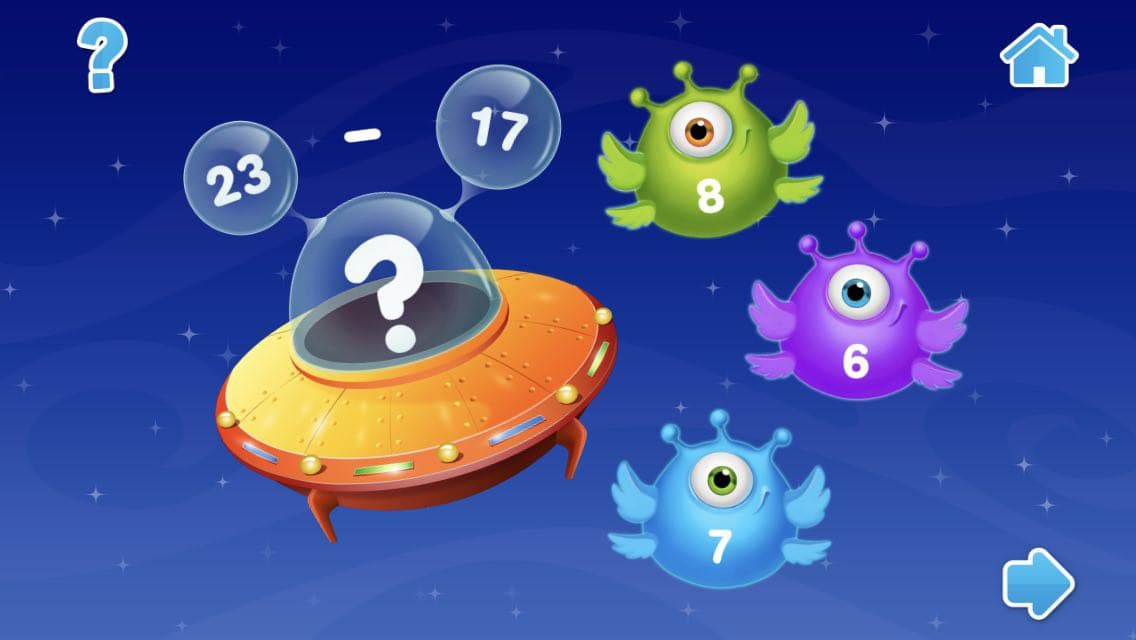Strategies for Teaching Math in Grades 1 through 3
Dec. 5, 2017
Since the introduction of the common core, school districts across the nation have emphasized the importance of understanding the process over learning rote memorization to learn formulas and solve problems. Since kids no longer rely only on traditional memorization methods to learn math, the techniques we teach kids must give them the tools they need to understand math. Let us take a deeper look at some of the best practices for teaching math to early elementary kids using common core printable worksheets.
Grade 1: Techniques to Teach
In kindergarten, kids are working on basic math, like learning to count, and simple addition and subtraction using single numbers. First grade math is a huge step up in complexity, as kids are learning to count larger numbers, learning to solve equations, and adding to their vital math vocabulary.
As kids learn increasingly complex math concepts, the following strategies can help students increase their number sense:
Teaching Place Value
Adsense-container
One of the most important concepts to introduce to first graders is place value. Think of place value as a gateway to easily understanding large numbers. Once kids are able to understand a digit’s place or value in a number, they can learn the steps to adding and subtracting numbers larger than 10.
Comparing Numbers
Kids are able to compare numbers from an extremely early age, and are adept at being able to tell when they someone has more or less of something than them. In the first grade, kids take this a step further by learning “greater than”, “less than”, and “equal to”, which helps reinforce the relationship and value of numbers.
- Using Fact Families to Show Relationships
Fact families show kids how numbers are related to each other. When kids understand the association between numbers and the facts that unite them, they are able to see how addition and subtraction are related, and even how they can use addition to subtract, and vice versa.
Grade 2: New Strategies for Even Bigger Numbers
Second grade math continues the hard work of first grade by increasing the number values and introducing new techniques for working with them. 1st and 2nd grade worksheets include the same overall topics, like addition and subtraction, but kids learn to relate addition with subtraction, work with base blocks, and more!
Use the following strategies to help your second grader master grade-level math concepts:
- Using Number Lines to Relate Addition with Subtraction
Like base blocks, number lines offer a visual aid for kids to understand numbers. However, number lines help kids understand where numbers stack up in a continuum, and help little learners to relate addition with subtraction, as they can add and subtract along the continuum.
- Working with Word Problems
Word problems go a long way in helping kids build their number sense. Word problems provide a purpose to completing math, and can show kids how math can be used in real life. Additionally, when kids work with word problems, they sharpen analytical problem-solving skills as they think through the problem to determine the way the problem must be solved.
- Adding and Subtracting using Regrouping
Most adults learned to “borrow” numbers when subtracting, but were never taught why we did it. Teaching kids to use regrouping with addition and subtraction, teaches kids to use the knowledge they already learned in regard to place value to make addition and subtraction easier by regrouping the numbers into numbers that are easier to work with.
Grade 3: Introducing Multiplication and Division
Once kids are armed with the necessary tools to perform more complex math operations, it’s time to introduce third graders to multiplication and division using techniques to make it easy and understandable for early learners. In addition, kids are adding to their mental math library, skip counting by the thousands, and working with fractions!
These strategies work best for teaching complicated third grade math:
- Using Graphs and Charts to Teach Measurement
Important for the development of data analysis skills, working with graphs give kids a visual to aid them in learning measurement, while teaching kids to use graphs to collect information.
- Skip Counting to Teach Multiplication
Long gone are the days of merely memorizing multiplication tables. By using a skill kids are already familiar with—skip counting—multiplication is made easy and understandable. Additionally, using images help kids understand the process of multiplication and how they find an answer because they are able to count the images on the worksheet and make a connection between the pictures and the answer on the page.
- Using Shapes and Pictures of Familiar Objects to Teach Fractions and Geometry
When familiar pictures are broken up into equal parts, it’s easy to see fractions visually. This translates into kids who understand how to recognize and work with fractions, leading to a thorough understanding of numbers and their parts.
- Introducing Base Blocks to Represent Large Numbers
Base blocks serve as manipulatives and visuals that kids can use to learn basic mathematical concepts. By using base blocks, we can introduce kids to larger groups of numbers, like tens and hundreds. Kids can then learn to add or subtract using base blocks, while gaining a deeper understanding of the process they take to solve problems.
In recent years, educators have made it a point to teach kids to learn math by growing their number sense for a more thorough understanding of math processes. This means that the way kids learn math today is very different from anything seen in the classroom ever before. This translates into more kids succeeding in math just by using new strategies like the ones above!











